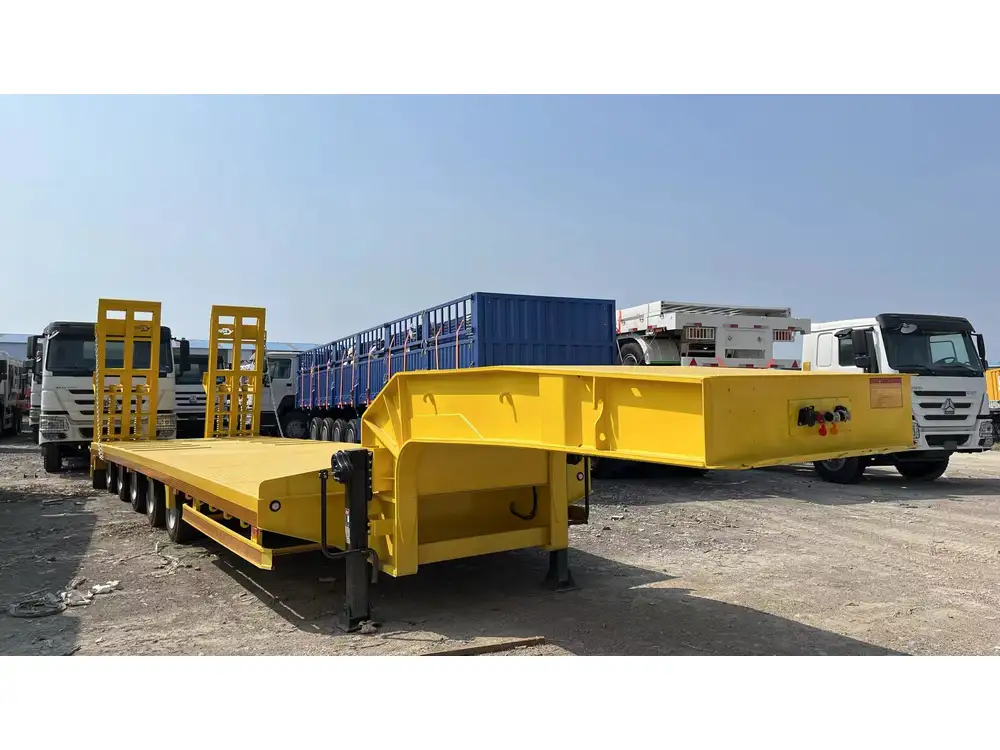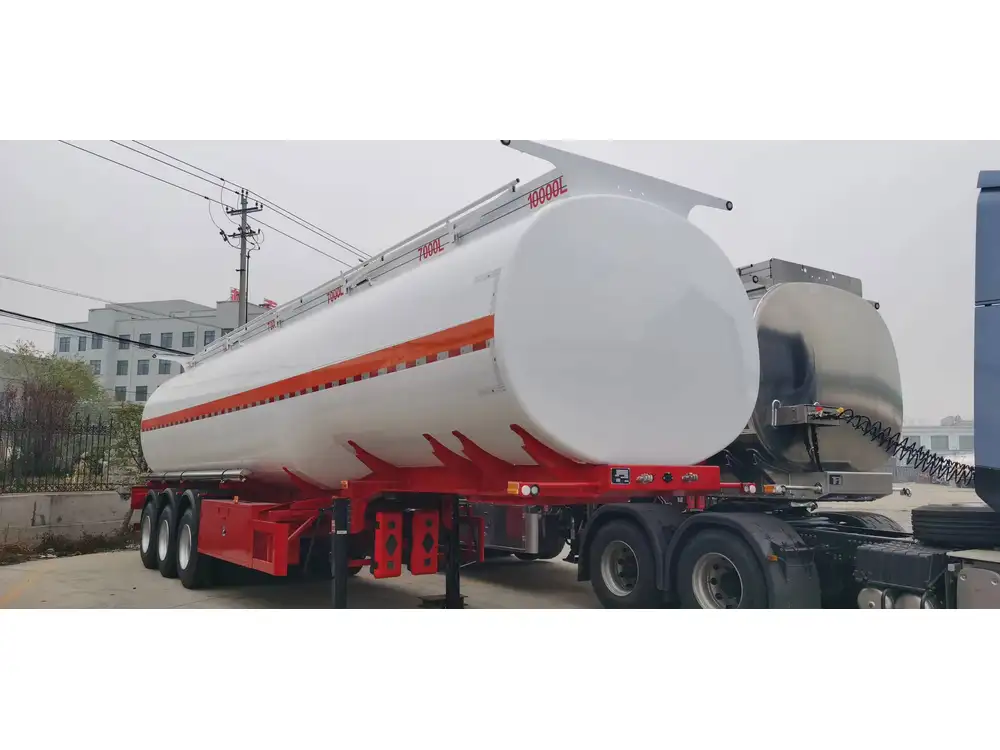When it comes to managing long-haul transportation, understanding the fuel capacity of semi-trailers is pivotal. Fuel economy not only affects operating costs but also plays a significant role in logistics planning, route optimization, and ensuring compliance with regulatory standards. This article delves into the intricate details of semi-trailer fuel capacities, contributing factors, and the implications on operational efficiency.
1. Understanding Semi-Trailer Fuel Tanks
1.1 Fuel Tank Capacities Defined
Semi-trailers are equipped with fuel tanks that hold diesel, the primary fuel type for most commercial transport vehicles. The capacity of these tanks can greatly vary based on the truck’s specifications and the manufacturer’s design standards. Generally, most semi-trailers possess one or two fuel tanks, and the sizes typically range from 50 to 150 gallons per tank—resulting in an aggregate capacity of 100 to 300 gallons.
| Tank Configuration | Typical Capacity (Gallons) | Total Possible Fuel Capacity (Gallons) |
|---|---|---|
| Single Tank | 50 – 150 | 50 – 150 |
| Dual Tanks | 50 – 150 each | 100 – 300 |

1.2 Fuel Tank Variations
1.2.1 Single vs. Dual Tanks
Single Tank: A single tank configuration can simplify maintenance and reduce weight. However, it may restrict the total fuel capacity, making fuel stops more frequent during long hauls.
Dual Tanks: By employing two tanks, trucks can extend their driving range significantly, which is especially advantageous for long-distance hauls or in regions lacking accessible fuel stations.
1.2.2 Custom Configurations
In some cases, companies may opt for custom-built fuel tanks tailored to their specific needs. This customization can lead to increased efficiency based on route geography and cargo demands.

2. Factors Affecting Fuel Capacity
Understanding fuel capacity requires contemplation beyond mere numbers. Several key factors influence how much fuel a semi-trailer can hold and how effectively that fuel is utilized.
2.1 Truck Specifications
The design and specifications of a truck—including the engine size, weight, and overall build—play a significant role. Certain manufacturers optimize for higher fuel efficiencies, allowing for larger tanks without compromising performance.
2.2 Federal Regulations
Regulatory standards, such as those enforced by the Department of Transportation (DOT), dictate specific limitations and requirements for commercial vehicles. These guidelines often affect the size and number of fuel tanks permissible on semi-trailers.

2.3 Cargo Load Considerations
The nature of cargo being transported can dictate the ideal fuel capacity. Heavier loads might necessitate larger tanks to ensure a balanced weight distribution across the trailer, which is vital for maintaining performance and safety.
2.4 Driving Conditions
Long-haul journeys through mountainous areas or extreme weather conditions can impact fuel burn rates. In such scenarios, substantial fuel reserves become crucial.
3. Fuel Economy and Its Importance

3.1 Understanding Fuel Economy
Fuel efficiency is often gauged in miles per gallon (MPG). For semi-trucks, the average fuel economy can range from 6 to 8 MPG, depending on factors such as load, aerodynamics, driving habits, and engine specifications.
3.2 Calculating Range
To ascertain how far a semi-trailer can travel on a full tank, one can utilize the following formula:
[ \text{Total Range} = \text{Total Fuel Capacity} \times \text{Fuel Economy (MPG)} ]For instance, if a semi-trailer has a total fuel capacity of 200 gallons and an average fuel economy of 7 MPG:
[ \text{Total Range} = 200 \, \text{gallons} \times 7 \, \text{MPG} = 1400 \, \text{miles} ]3.3 Economic Implications
With rising fuel prices, understanding fuel economy not only saves money but also aids in making strategic business decisions. A more fuel-efficient semi-trailer can reduce overall costs, allowing companies to invest in other necessities.

4. Tips for Maximizing Fuel Efficiency
4.1 Regular Maintenance
Investing in regular maintenance checks ensures that the engine operates at peak efficiency. Simple tasks like oil changes, tire pressure checks, and engine tuning can greatly enhance fuel economy.
4.2 Aerodynamics
Improving the aerodynamic profile of the trailer can lead to significant reductions in drag. Adding features such as side skirts and streamlined fairings can contribute to better fuel efficiency.

4.3 Weight Management
Minimizing unnecessary weight can positively impact fuel economy. Utilizing lightweight materials for trailers can enable drivers to carry more cargo without exceeding weight limits.
4.4 Driving Behavior
Encouraging drivers to adopt smoother driving habits—such as gradual acceleration and deceleration—can lead to substantial fuel savings over time.
5. Challenges to Fuel Capacity
Despite understanding what constitutes fuel capacity, various challenges can complicate effective fuel utilization.

5.1 Fuel Theft Concerns
Fuel theft presents a significant challenge for freight companies. Implementing security measures, such as GPS tracking and fuel monitoring systems, helps mitigate these risks.
5.2 Fuel Contamination
Contaminants can adversely affect engine performance. Regularly monitoring fuel quality and staying updated with maintenance protocols can prevent issues related to contaminated fuel.
5.3 Market Volatility
Fluctuations in fuel prices necessitate an agile approach to fuel management. Keeping abreast of market trends and seeking out fuel discount programs can help manage costs effectively.

6. Future Trends and Innovations
6.1 Alternative Fuels
The shift towards sustainability has prompted manufacturers to explore alternative fuels such as compressed natural gas (CNG) and electric semi-trailers. These advancements may redefine fuel capacity as fleets evolve.
6.2 Smart Fleet Management
The integration of technology in fleet management, such as telematics systems, allows for real-time tracking of fuel usage and performance analytics, enabling companies to optimize their operations.

6.3 Autonomous Driving
The rise of autonomous vehicles could lead to more precise fuel management and efficiency. With advanced programming, these trucks can maintain optimal speeds and routes, potentially lowering fuel consumption.
7. Conclusion
In the realm of semi-trailers, the question of how much fuel a semi-trailer holds transcends mere numbers. It is an intricate interplay of specifications, regulations, and strategic considerations that dictate its importance in logistics and transportation efficiency. Knowing the fuel capacity is just the start; understanding the broader implications ensures operators possess the tools necessary for successful long-haul transport.
By addressing these multifaceted elements of fuel capacity, we equip ourselves to navigate the ever-evolving landscape of the trucking industry and its demands efficiently.



